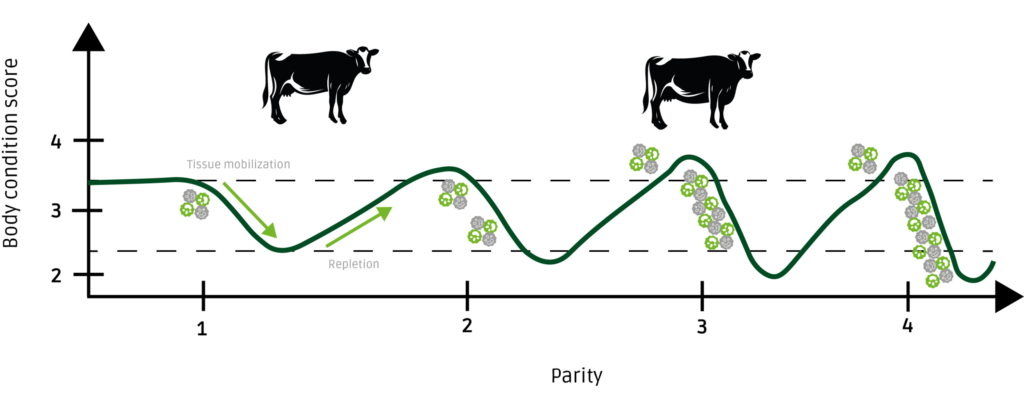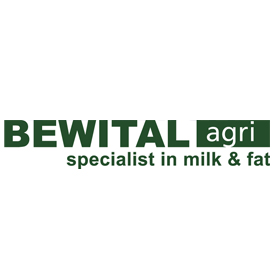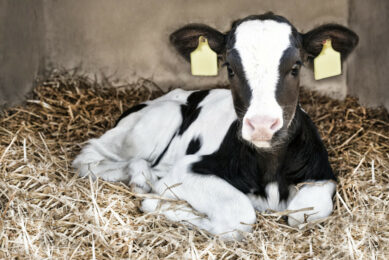How to keep high-yielding dairy cows healthy

The first third of lactation presents significant metabolic challenges for high-yielding dairy cows. External factors such as fluctuating weather conditions or an increased risk of BTV infections can further intensify metabolic problems. A targeted feeding strategy helps stabilise milk production and metabolism sustainably.
With milk yields now often exceeding 40 litres per day, cows divert large amounts of energy, protein and lactose into milk, often leaving insufficient nutrients for their own metabolic needs. This can lead to metabolic disorders, sometimes called ‘civilisation diseases’ in dairy cows. These, however, can often be mitigated by optimised feeding and management strategies. Ensuring sufficient energy supply during early lactation is essential.
Immediately after calving, the energy demand rises sharply due to milk production. However, feed intake lags behind energy output, resulting in a negative energy balance – a common issue in early lactation. A negative energy balance is primarily compensated through body fat mobilisation and its extent depends on feed intake, energy density of the diet and milk yield. A prolonged negative energy balance adversely affects health, fertility and production.
Prevent excessive body condition loss
To compensate for a negative energy balance, high-yielding cows mobilise significant fat reserves (lipolysis), often losing more than 10% of their body weight in early lactation. This pattern has worsened in recent decades due to selection for higher initial milk yield. Cows with a higher body condition score at calving typically show greater fat mobilisation and more rapid body condition score loss postpartum.
Some cows consistently lose more weight than others. This is believed to have a genetic component and becomes more pronounced with increasing parity.
Support energy supply with the right feeding strategy
Keeping cows healthy over multiple lactations is key to sustainable dairy farming. Supporting energy supply during early lactation is therefore critical. However, increasing energy density via high starch concentrates risks acidosis. Fats, particularly rumen-stable fats, offer a high-energy alternative without disturbing rumen function.
Unlike standard fats, rumen-stable fats bypass ruminal fermentation and are digested in the small intestine. These are typically derived from palm or rapeseed oil and differ in fatty acid composition, particularly in the proportions of palmitic acid (C16:0) and stearic acid (C18:0).
The advantages of a combination of stearic acid and palmitic acid in rumen-stable fat as an energy source for high-yielding cows have been described. This is confirmed by more recent research (Shepardson and Harvatine, 2021) using a 2% fat supplement rich in palmitic and stearic acid and a rumen-stable fat powder with a balanced ratio of palmitic and stearic acid (45% and 49%). The combination of palmitic and stearic acid showed the greatest effect on daily milk yield. The use of fat powders containing stearic acid resulted in an increase in dry matter intake and a reduction in non-esterified fatty acid values in the blood. This indicates a lower mobilisation of body mass combined with an improved energy balance.
Older cows require more metabolic and immune support
Bradford and Contreras (2024) demonstrated that fat mobilisation is linked to immune cell activity in adipose tissue, indicating a chronic inflammatory response. Notably, T lymphocytes, which accumulate during lipolysis, are retained until the next lactation, compounding the inflammatory response with each cycle.
By the fourth lactation, immune cell concentrations may be high enough to visibly impair metabolic and reproductive performance. This could explain the increased incidence of infections, metabolic disorders and infertility in older high-yielding cows experiencing a greater negative energy balance and body condition score losses.
Figure – Development of body condition score and immune reaction during consecutive lactations (adapted from Bradford and Contreras, 2024)

Supporting cows with antioxidants and phytogenics
External factors such as fluctuating weather conditions or an increased risk of BTV infections can further intensify metabolic stress and inflammatory reactions. Oxidative stress has been associated with several inflammatory conditions and is implicated in the pathogenesis of many diseases. Researchers have shown that inflammatory udder conditions reduce ascorbic acid concentration in the blood. They concluded that incorporation of antioxidants like vitamin C helps in better management of inflammatory risk.
Similar conclusions were drawn from other studies on the role of vitamin E. One study described positive effects of high doses of vitamin E on the immune competence in periparturient dairy cows. Willow bark, derived from various species of the Salix genus, has also been utilised for centuries due to positive effects in several species.
Practical solution: Bewi-Fatrix CX
The product innovation Bewi-Fatrix CX has been specifically developed to support cows during the critical phases of increased demand. A practical farm trial demonstrated a significant improvement in metabolic stability with Bewi-Fatrix CX. Spontaneous drops in performance were eliminated and the cows regained their previous production levels.
The synergistic composition of rumen-stable fat, rapeseed lecithin, vitamins E and C and willow bark (Salix spec.) is unique in the market. Bewi-Fatrix CX is produced using a specialised manufacturing process embedding the ingredients with Bewi-Fatrix technology for optimal protection.
Conclusion
Supporting high-yielding dairy cows requires a proactive approach, from managing energy balance and preventing body condition loss to protecting immune function with targeted supplements like Bewi-Fatrix CX.
References available on request.
Join 13,000+ subscribers
Subscribe to our newsletter to stay updated about all the need-to-know content in the dairy sector, two times a week.



